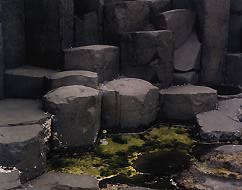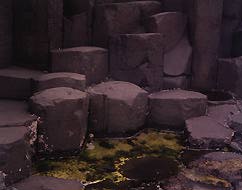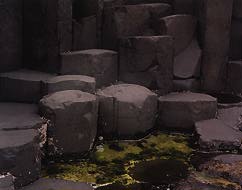

However, the popularisation of RA-4 chemistry in the past two or three years has certainly helped reduce these problems to more manageable proportions.
This month I decided to make a color print from negatives processed in my own darkroom instead using my local laboratory. To do this I chose to use Tetenal C-41 Rapid chemistry for the negative development, and two different types of RA-4 chemistry for the print development, again manufactured by Tetenal.
One objective was to see whether I was happy with a self-processed color negative. A second objective was to assess the quality of a particularly easy-to-use RA-4 chemistry, Tetenal Mono PK RA-4, which consists of just two concentrates and needs only to be diluted for use. The third objective was to compare the results from this simplified kit with a conventional RA-4 chemistry from the same maker, using the same paper and negative, to see whether the filtration, exposure and overall quality remained constant.
The working solution will develop up to eight 35mm 36 exposure films with a time adjustment necessary for each successive cycle. In practice two films are developed in each cycle with a 15 second increase in development time for the next cycle.
I found the process to be quite painless although it is necessary to have a water bath in which to hold the temperature at the required level of 38 degrees C. The negatives of the Giants' Causeway that I produced are as good as any produced by my local laboratory and compare very favourably in price at �2.50 ($4.00) per roll against �3.90 ($6.00) charged by the laboratory.
My next visit will be in the depth of winter when I feel certain that I will be relatively untroubled by people and will hopefully be able to capture the grandeur and atmosphere of one of the most interesting places that I have visited in Ireland.
Tetenal CD-R RA-4 chemistry works at 35 degrees C and produces a print in about 90 seconds using a roller processor. The color developer is supplied in three parts and can very quickly be made up to working strength, while the bleach fix comes in two parts and again is easily made up. The leaflet supplied clearly indicates the volumes required for mixing to working strength.
Mono PK RA-4 is a relatively new development in RA-4 chemistry; the 'Mono' sounds confusing, because of its German origins, where it does not mean anything to do with black and white. There is only one concentrate for each bath, which makes mixing very simple, although the color developer does have to be shaken quite vigorously before mixing as it settles into two layers in its concentrated form. Working temperature can be anywhere between 16 and 25 degrees C, which makes control much easier and processing can be carried out at room temperature. Processing times are relatively short - 2 mins 10 seconds at 16 degrees and 40 seconds at 25 degrees.
In the instruction leaflet, Tetenal claim that exceeding processing times is not critical and that the color developer time can be exceeded by up to 50%. I did try this and found no difference in the final prints. I used the Printo Compact with the temperature set at 25 but Mono PK RA-4 chemistry can also be used in drums, tank processors and even dishes. All prints were made using Tetenal Work 310 glossy surface paper, a robust paper that produces good clean prints.

The Mono RA-4 print exhibits a clean range of tones and good color, with a neutral black and well-separate shadows

The standard RA-4 print at the same exposure and filtration is dark and muddy by comparison as well as showing a color shift

The best I was able to manage trying to bring the standard RA-4 process to match the Mono PK RA-4 - still nothing like as clean
The Mono PK RA-4 prints are, in my opinion, better prints than those produced using the more conventional CD-R RA-4 chemistry. It was not possible to match the Mono PK result; in addition to the shot shown, I also tested a second similar subject, and other negatives of more conventional blue-sky scenes.
So, it clearly does make a difference which RA-4 chemistry you choose - and it does not follow that sticking with the traditional formulae needing elaborate mixing and fixed temperatures will result in a better print.
All RA-4 chemistry is certainly an improvement on the old EP-2 process, not only on the grounds of speed in producing the final result but in the fact that the working solutions do last longer.
These Tetenal materials produce good quality prints at a sensible price and without doubt, in my mind at least, Mono PK RA-4 represents a significant breakthrough in making prints from colour negatives. Clearly, Tetenal have given us all a good economical range of products which will enable many photographers to enjoy the making of high quality colour prints.
I suggested he did not need to make elaborate Zone tests, but would find a meter-reading from the skin tone of a sitter, opened up by one stop, would place the skin in Zone VI. I also commented that manufacturers often err in favour of over-development for safety. I suggested a 20 per cent cut in the time recommended for his chosen T-Max 400 in Aculux.
Robert tried the advice, and wrote back that he had found it most helpful, agreed with the comment on possible overdevelopment - and is now working on an exhibition.